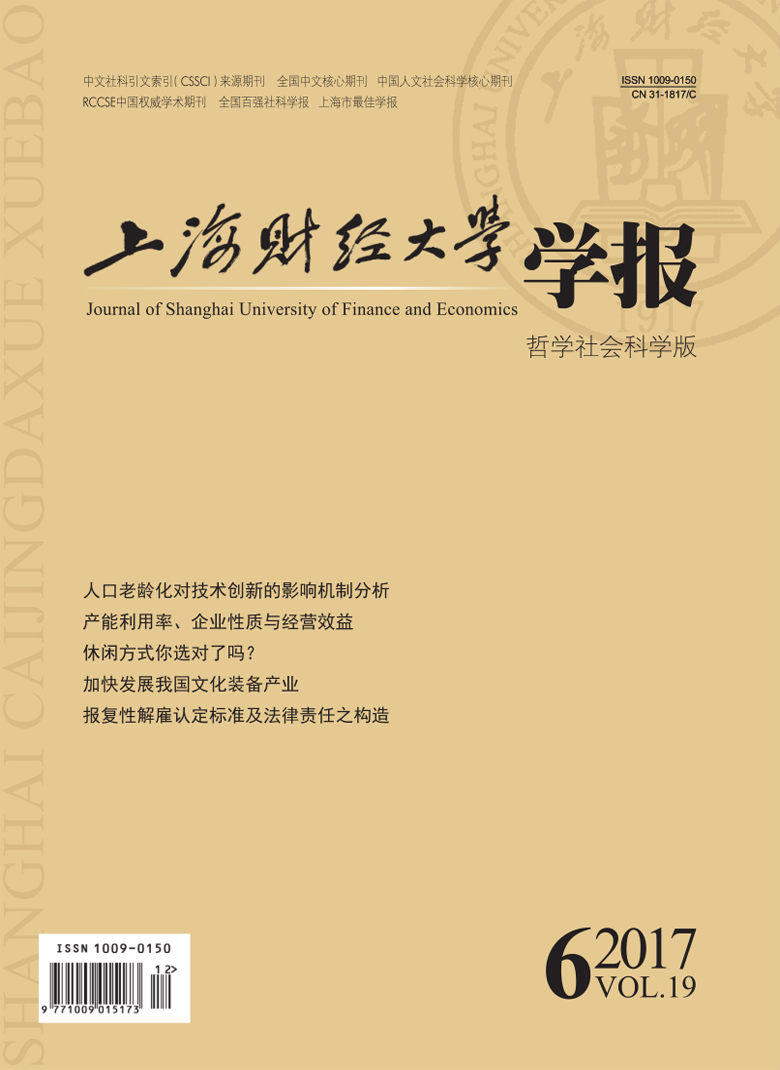Recently, our judicial authorities have met with some cases of retaliatory discharge. However, it is difficult for judicial authorities to identify retaliatory discharge and how to grant proper legal responsibilities. Owing to the dismissal mode of statutory reasons, our judicial authorities tend simply to compare retaliatory discharge with wrongful discharge, ignoring the uniqueness of retaliatory discharge. As a result, employees who are discharged usually could not gain effective remedy. In other words, in China, the current system of dismissal protection has some defects. The action of retaliatory discharge not only violates the employees’ right to work, but also encroaches employees’ citizenship and social public interests. With the globalization, constantly rising civil right consciousness of new generations and the ruling by constitution to protect the basic rights of citizens, it is vital to protect employees’ rights and social public interests. So we have to take retaliatory dismissal into the orbit of legalized governance. In terms of prohibiting retaliatory dismissal, there are two most important rules, namely identification and accountability rules. Before setting up the rules of identification and accountability, first of all, this paper defines the concept of retaliatory discharge and makes a typological analysis. Then according to the legislative and judicial experience in America, it constructs identification standard and legal responsibilities. These rules are the main innovation points of this paper. As for the construct of identification standard of retaliatory dismissal, we should respectively justify retaliatory subject, retaliatory target, retaliatory motive and causality. As for the construct of legal responsibilities of retaliatory dismissal, it is essential for us to build the system of legal responsibilities which revolves around punitive damages. These legal responsibilities contain reinstatement, compensatory damages and punitive damages. Compensatory damages are divided into the damages of actual benefit losses and the ones of expected benefit losses. The specific amount of punitive damages should be controlled by judicial activities. In other words, the judicial authorities should consider a lot of factors when determining specific amount of punitive damages. In the end, it is practical to refer to the rules of identification standard and legal responsibilities of retaliatory dismissal in USA, based on the condition that the basic framework of our current dismissal protection system is invariable. Taking the rules of identification standard and legal responsibilities into our system of dismissal protection, the legislators should note the following points. In particular, they have to pay attention to the provision of prohibitive regulations of retaliatory discharge, the protection of victims related to retaliatory discharge, the rebuilding of the system of legal responsibilities of retaliatory discharge and the formulation of the act of protecting public prosecution.
 / Journals / Journal of Shanghai University of Finance and Economics
/ Journals / Journal of Shanghai University of Finance and EconomicsJournal of Shanghai University of Finance and Economics
LiuYuanchun, Editor-in-Chief
ZhengChunrong, Vice Executive Editor-in-Chief
GuoChanglin YanJinqiang WangWenbin WuWenfang, Vice Editor-in-Chief
The Design of Identification Standard and Legal Liabilities of Retaliatory Discharge: In View of US Experience of Legislation and Judicature
Journal of Shanghai University of Finance and Economics Vol. 19, Issue 06, pp. 115 - 131 (2017) DOI:10.16538/j.cnki.jsufe.2017.06.010
Summary
References
Summary
[1]Phillips A E. Employment law-——retaliatory discharge-——illinois relaxes the standard of retaliatory discharge actions: palmateer v. international harvester[J]. Suffolk University Law Review, 1981, 15(3): 1355-1371. [2] Spitzig J R, Sackett-Chicago M V. Inc: Extension of the tort of retaliatory discharge to employees covered by collective bargaining agreements[J]. Loyola University Chicago Law Journal, 1995, 30(5):799-824.
[3]O’Dell P L. Retaliatory discharge: corporate counsel in a catch-22[J].Alabama Law Review, 1993, 44(2):573-598.
[4] Schneier M. Public policy limitations on the retaliatory discharge of at will employees in the private sector[J]. U. C. Davis Law Review, 1980-1981, 14(2): 811-837.
[5]Baker-Seal D. From retaliatory discharge to retaliation by association: the expanding scope of viable retaliation claims against employers[J].IDC Quarterly, 2010, 23(3):1-20.
[6]Van Noppen D. Workers’ compensation-—retaliatory discharge-—the legislative response to dockery v. Lampart Table Co. [J]. North Carolina Law Review, 1980, 58(4): 629-646.
[7] Pike N. The interpreting the meaning of willful under the north carolina retaliatory employment discrimination act and federal employment protection statutes[J]. Charleston Law Review, 2012-2013, 7(1): 533-556.
[8]Love J C. Retaliatory discharge for filing a workers’ compensation claim: the development of a modern tort action[J]. Hastings Law Journal, 1986, 37(1): 551-590.
[9] Malin M H. Protecting the whistleblower from retaliatory discharge[J].University of Michigan Journal of Law Reform, 1983, 16(4):277-318.
[10]Alvin L. Goldman. Labor Law in the USA[M]. New York: Wolters Kluwer Press, 2014.
Cite this article
Mao Jing. The Design of Identification Standard and Legal Liabilities of Retaliatory Discharge: In View of US Experience of Legislation and Judicature[J]. Journal of Shanghai University of Finance and Economics, 2017, 19(6): 115–131.
Export Citations as:
For




 9863
9863  9512
9512

